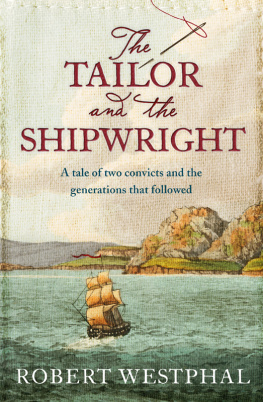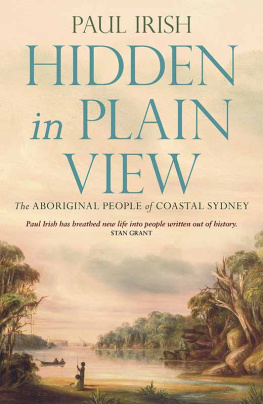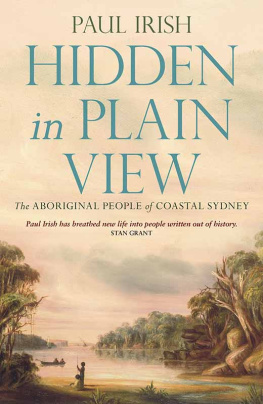
TAILOR

SHIPWRIGHT
ROBERT WESTPHAL

First published in 2019 by Impact Press
an imprint of Ventura Press
PO Box 780, Edgecliff NSW 2027 Australia
www.impactpress.com.au
10 9 8 7 6 5 4 3 2 1
Copyright Robert Westphal 2019
All rights reserved. No part of this book may be reproduced or transmitted in any form or by any means, electronic or mechanical, including photocopying, recording or by any other information storage retrieval system, without prior permission in writing from the publisher.
ISBN: 978-1-920727-38-3 (paperback)
ISBN: 978-1-920727-37-6 (ebook)

Cover and internal design: Deborah Parry Graphics
Cover image: Joseph Lycett, approximately 1775-1828, View of the south end of Schouten's Island, Van Diemens Land, National Library of Australia, nla.obj-135711592.

Contents


Sydney Cove 18101820 with Governor Macquaries development of new construction. Map courtesy of the Mitchell Library.

Shell Cove and Balmoral Beach circa 1832 depicting the location of Barney Kearnss Boat House and Thomas ONeils Hunters Meadows farm. Map courtesy of the Mitchell Library.

Hunters Meadows farm circa 1835 following Charles Beilbys purchase of 30 acres of Hunters Meadows from Tom and Mary Ann Brown (nee ONeil). Map courtesy of the Mitchell Library.

Authors Note
This book grew out of the exploration of my familys history. As anyone who has begun such an exploration knows, the discoveries you make can be very exciting and surprising. Digging back through your genealogy is like doing a jigsaw puzzle, with the shape and picture on the box a blank. This is particularly so as you work back to older generations beyond living memories.
As I worked back through the records on my mothers side of the family, I came across the principal people that form the basis of this book; William and Anastasia Foster being my thrice great-grandparents and Thomas and Anne ONeil my four-times great-grandparents. Another significant couple in this narrative bear no blood relation to me, and that is George and Harriet Atherden, who raised my twice great-grandmother Harriet Foster and her brothers and sisters.
The ONeils and William Foster did not arrive and live in Sydney by choice. Prior to their arrival at the very start of the 1800s, they had survived months of incarceration in British and Irish prisons, Portsmouth hulks and below decks on convict transport ships. They subsequently led fruitful and successful lives in the developing colony of New South Wales.
Those people mentioned by name in this book lived at the time and in the places mentioned. Surviving documents show how they came to the Great Southern Land, how they lived and how their families evolved. The vast majority of events are factual. However, where details are not specifically known, some circumstances have been embellished to enhance the story and link events and people together.
European settlement in Australia, or as it was then known, New South Wales, began with the arrival of English convict ships, the so-called First Fleet, on 18 January 1788. After finding the landing site of Botany Bay unsuitable, the fleet moved on 26 January to the perfect harbour just north, which they named Sydney Cove. They were surprised to find the place as fully inhabited as it was but settled there nonetheless, fairly peacefully in the first instance.
Twelve years later, at the turn of the century, Sydney was the hub of all colonial activity. About 2,500 mostly British settlers lived within its environs. Other centres had been established, including Parramatta and Windsor, with fertile alluvial soils which became farming areas that helped feed the growing population. Coal Town, now Newcastle, was also an important centre, and Norfolk Island had been settled with convicts to harvest its flax and timber.
The Indigenous population around the harbour, collectively known as the Eora, had suffered extreme loss of life in the first years after European arrival, primarily due to smallpox, chicken pox and measles to which they had no prior exposure. The smallpox was almost certainly deliberately spread by one or more of the settlers. The epidemic first broke out among the Aboriginal population on the northern side of the harbour a little over a year after the First Fleets arrival, although the settlers themselves were free of the disease. It was estimated these diseases took somewhere between half and ninety per cent of the local population. A battle led by the Eora warrior Pemulwuy raged against the settlers for many of the early years until he was shot dead in June 1802. The remaining Eora moved further away from the towns, although by the time my ancestor Thomas ONeil arrived in 1800 there were Indigenous people living and trading around the harbour foreshore.
By 1800, the colony had seen the appointment of two governors. Captain (Admiral) Arthur Phillip RN served from the First Fleets arrival in 1788 until 10 December 1792, when he returned to England for health reasons. This left the officers of the New South Wales Corps filling the vacuum until another governor arrived. Major Francis Grose was Commandant of the New South Wales Corps at this time. The Corps was a military force whose primary function was to defend the colony and prevent uprisings, not to manage and supervise prisoners. Grose set out to secure the authority of the Corps and the colony was re-established under military rule with military courts.
The English Government had viewed the settlement at Sydney as little more than a remote prison and thus saw no need for currency. However, a form of currency became necessary to pay for labour and goods. A system of barter began and the medium of exchange was rum and distilled liquor. The Corps controlled the importation of alcohol and thereby effectively controlled the prices for all goods and services.
The government stores became the centre of the colony in its early years. Government food and clothing were distributed from, and all locally grown produce delivered to, these warehouses. Members of the Corps received generous grants of land, complete with convict labour fed and clothed from these government stores. Power really lay with the military.
It would be three years before Governor Phillips replacement arrived. Captain John Hunter RN had first visited with the First Fleet in 1788 and returned in 1795 to take up the post. He found it difficult to manage the army officers, who by then had established complete control of lands, stores, labour and trade. Governor Hunter was recalled in 1800.
Next page



















